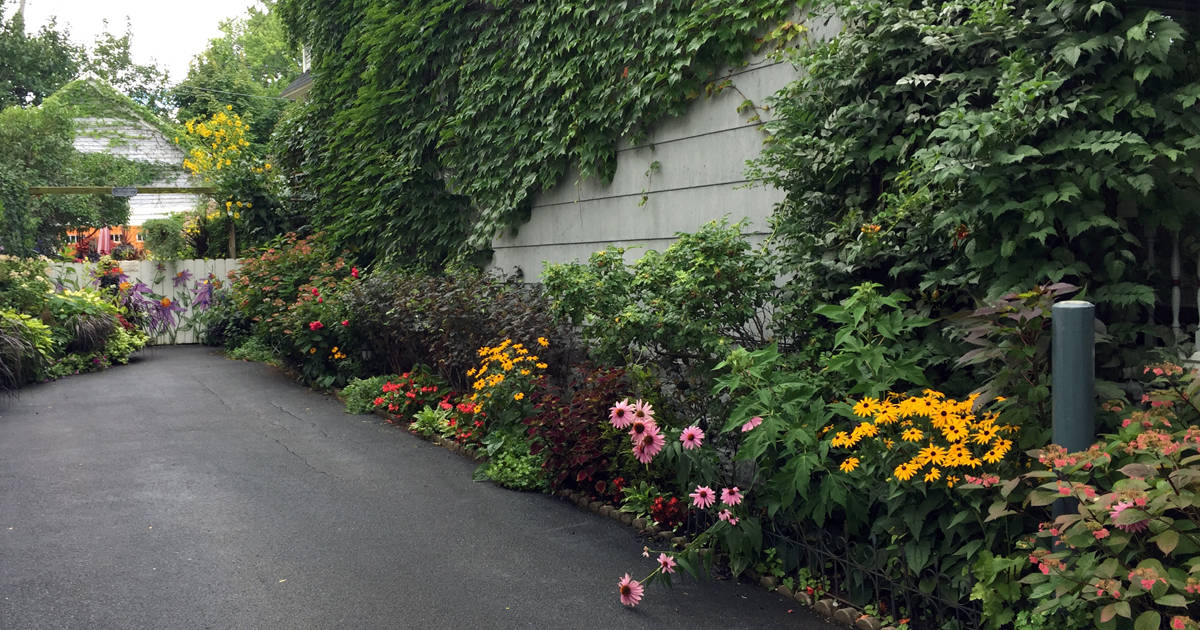Some Known Questions About Hilton Head Landscapes.
Some Known Questions About Hilton Head Landscapes.
Blog Article
Hilton Head Landscapes Things To Know Before You Get This
Table of ContentsThe Greatest Guide To Hilton Head LandscapesFascination About Hilton Head LandscapesNot known Details About Hilton Head Landscapes Not known Details About Hilton Head Landscapes Hilton Head Landscapes for BeginnersHilton Head Landscapes - TruthsThe Single Strategy To Use For Hilton Head Landscapes6 Simple Techniques For Hilton Head Landscapes
Form compatibility is additionally a significant element of unity in designone or two noticeably various types benefit contrast and emphasis, however typically all various other kinds should have some resemblances for a merged appearance. Appearance refers to just how rugged or fine the surface area of the plant or hardscape product feels and/or looks.
Examples of plants with coarse structure consist of philodendrons, agaves, bromeliads, hollies, palms, and hydrangeas. Hardscape with coarse appearance consists of rough-cut rock, rough-finished block, and incomplete timber with knots and an increased grain. Aged or old construction product that maintains a weather-beaten surface is frequently crude in structure. Qualities that create great structure include small foliage; thin, strappy fallen leaves (turfs) or high, thin stems; small, dense branches and little branches; long stems (vines); and tiny, delicate blossoms.
Excitement About Hilton Head Landscapes
The majority of plants are medium texture, in that they can not be described as having either coarse or fine appearance. Medium-textured plants act as a background to link and combine the rugged- and fine-textured plants.

To make an area really feel smaller sized, put the coarse structures along the external boundary and the great appearances closest to the viewer. The information of the coarse texture makes the plants appear closer and makes the space really feel smaller sized. The perceived texture of plants can additionally change with the range from the plant.
Hilton Head Landscapes Can Be Fun For Anyone
Vibrant shades boost the contrast and make the appearance show up coarser, while low-key colors can squash structure. Hardscape with a rugged texturesuch as extremely rough rocks and vibrant, big timberstends to make all plant material appear extra average distinctive. Developers frequently create a structure research (Figure 8) theoretically to help choose the setup of plant materials.
Number 8. Structure research. Shade in plant material and hardscape includes interest and selection to the landscape. Shade is one of the most noticeable element in the landscape and is generally the focus of many house owners; nonetheless, it is likewise the most momentary aspect, usually lasting just a couple of weeks a year for individual plants.
Unknown Facts About Hilton Head Landscapes
A simple description of the shade wheel consists of the 3 key shades of red, blue, and yellow; the 3 secondary colors (a mix of 2 primaries) of eco-friendly, orange, and violet; and 6 tertiary colors (a mix of one adjacent key and additional shade), such as red-orange. Color theory discusses the connection of shades per various other and just how they must be utilized in a make-up.

Similar (sometimes called harmonious) color pattern are any kind of 3 to 5 shades that are nearby on the shade wheel, such as red, red-orange, orange, yellow-orange, and yellow, or blue, see here blue-violet, and violet (landscaping hilton head sc). The colors belong to each various other due to the fact that they typically include two primaries mixed to form a secondary and two tertiary colors, which implies they share typical residential properties
Complementary shades are commonly found normally in flowers; a typical set is yellow and violet. Color is found in the flowers, foliage, bark, and fruit of plants.
Hilton Head Landscapes Fundamentals Explained
Eco-friendly vegetation in all its different tones is the dominant color by quantity, however other colors catch interest quicker as a result of their high comparison to the shade eco-friendly. Color is also discovered in structures, rocks, pavers, timber, and furnishings. Many shades in natural products, such as rock and wood, are usually muted and tend to be variations of brown, tan, and pale yellow.
Colors have residential properties that can influence emotions, spatial understanding, light quality, equilibrium, and focus. Great colors tend to be calming and should be utilized in locations for leisure and tranquility.
Some Known Questions About Hilton Head Landscapes.
The "temperature" of shades can additionally influence the understanding of range. Great shades have a tendency to recede and are regarded as being further away, making an area feel larger. Cozy colors often tend to advancement and are perceived as being better, making a space really feel smaller. Shade can additionally be used to record interest and direct sights.
For example, bright yellow, which has the highest possible intensity, also has a high contrast with all other colors (usually referred to as a "pop" of color) and must be made use of sparingly. A tiny quantity of intense color has as much aesthetic weight as a huge amount of a much more controlled or weak color.
Similar (occasionally called harmonious) color pattern are any three to 5 shades that are adjacent on the shade wheel, such as red, red-orange, orange, yellow-orange, and yellow, or blue, blue-violet, and violet. The colors are relevant to every other since they commonly consist of 2 primary shades blended to form a secondary and 2 tertiary colors, which means they share usual residential or commercial properties.
More About Hilton Head Landscapes
They have a tendency to have high comparison between them. The most typical sets are violet and yellow, red and environment-friendly, and blue and orange. Corresponding shades are usually located normally in blossoms; a common set is yellow and violet. Color is discovered in the flowers, vegetation, bark, and fruit of plants.
Green vegetation in all its numerous tones is the dominant shade by quantity, yet other colors record interest quicker since of their high comparison to the shade green - landscaping hilton head sc - https://issuu.com/h1tnhdlndscps. Shade is likewise found in structures, rocks, pavers, timber, and furniture. Many shades in natural materials, such as stone and timber, are usually low-key and often tend to be variants of brownish, tan, and pale yellow
The Definitive Guide for Hilton Head Landscapes
Shade is a crucial element for producing interest and range in the landscape. Colors have buildings that can affect emotions, spatial assumption, light quality, balance, and emphasis. One building of shade is described family member to temperaturecolors show up to be trendy or cozy and can impact feelings or sensations. Great colors have a tendency to be calming and must be made use of in areas for leisure and serenity.
The "temperature level" of shades can also affect the understanding of distance. Cool shades have a tendency to recede and are regarded as being further away, making a room really feel bigger. Cozy colors have a tendency to breakthrough and are perceived as being better, making a space really feel smaller sized. Shade can likewise be used to record focus and straight views.
For instance, bright yellow, which has the highest possible strength, likewise has a high contrast with all various other colors (often called a "pop" of color) and must be conserved. A tiny quantity of intense shade has as much visual weight as a huge amount of an extra subdued or weak color.
Report this page